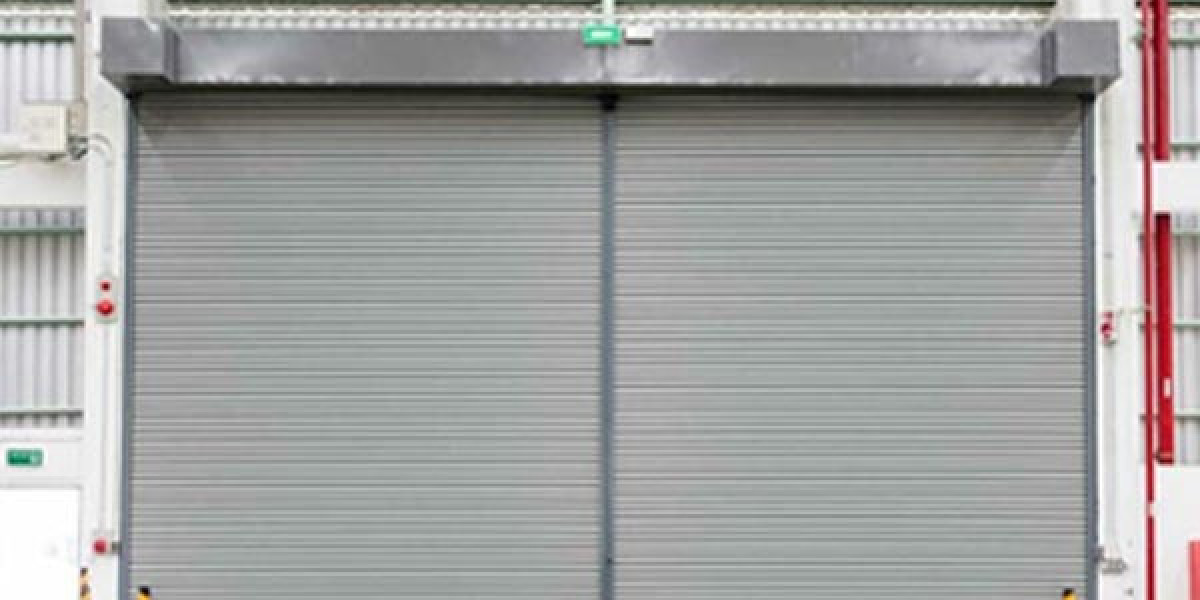When it comes to your commercial property, first impressions matter. The entrance of your building sets the tone for customers and clients alike, making a strong case for why you should consider a commercial door replacement project. Whether you're upgrading an outdated entryway or addressing wear and tear from daily use, this is more than just a cosmetic fix; it's an investment in security, accessibility, and overall aesthetics. But before diving headfirst into the world of door replacements, there are several key factors to understand. From materials that stand the test of time to regulations that keep everyone safe, being informed will help you make choices that benefit both your business and its visitors. Ready to unlock the secrets behind adequate commercial-door replacement? Let’s dive in!
Understanding the Scope of a Commercial-Door Replacement Project
Understanding the scope of a commercial-door replacement project starts with assessing your current needs. Are you looking for improved security, energy efficiency, or simply an updated look? Identifying these objectives helps narrow down options.
Next, consider the types of doors available. From sliding glass to solid steel, each option has unique benefits and drawbacks. Think about foot traffic and usage patterns in your space; this will guide you toward the best choice. Don't forget to factor in budget constraints. Costs can vary widely based on materials and installation requirements. Ensure you're prepared for both expected expenses and any unexpected costs that may arise during the process.
Timing matters significantly. Determine when it’s most convenient to carry out the replacement work without disrupting operations too much. Planning is key to a smooth transition while keeping business as usual running seamlessly.
Evaluating Door Materials for Longevity and Aesthetics
Choosing the right materials for your commercial doors is essential. It impacts both durability and visual appeal. When selecting door materials, think about how they will perform over time. Steel doors are a popular choice due to their strength and resistance to wear. They can withstand heavy traffic and harsh conditions, making them ideal for high-use areas. Steel also offers a sleek look that can be customised with various finishes.
Wooden doors bring warmth and character to any space. While they may require more maintenance than steel or fibreglass options, well-crafted wooden doors can last decades with proper care. Consider using treated wood to combat issues like warping or rot. Fibreglass doors are another excellent option for businesses seeking longevity without compromising on aesthetics. They mimic the appearance of wood but offer superior weather resistance and low maintenance needs.
Aluminium is lightweight yet strong, often used in storefronts where visibility is key. Its modern look fits seamlessly into contemporary designs while providing security and ease of use. Each material has its pros and cons depending on your business's specific needs—traffic levels, design preferences, and budget constraints—all play a role in decision-making.
How Building Codes and Safety Standards Influence Door Choices
Building codes and safety standards play a crucial role in determining the correct type of commercial door for your property. These regulations vary by location and are designed to ensure that doors meet specific performance criteria, such as fire resistance and accessibility requirements. Knowing these specifics is essential before making any decisions.
For instance, some businesses may need fire-rated doors to protect against potential hazards. These doors help contain fires, allowing more time for evacuation and minimising damage. Understanding local codes can guide you toward compliant options that enhance safety.
Additionally, ADA (Americans with Disabilities Act) guidelines dictate how accessible entrances should be designed. This means considering features like automatic openers or lower thresholds. Adhering to these standards not only ensures compliance but also promotes inclusivity for all patrons accessing your building.
Choosing Between Manual and Automated Entry Systems
When considering a commercial-door replacement, the choice between manual and automated entry systems is crucial. Manual doors often offer simplicity and lower upfront costs, making them a practical option for some businesses. They require minimal maintenance and are straightforward to operate.
On the other hand, automated entry systems add convenience and accessibility. With features like touchless operation or remote access, they enhance the user experience. These systems can be particularly beneficial in high-traffic areas where ease of movement is essential.
It's essential to think about your specific needs when choosing between these options. Consider foot traffic volume, compliance with accessibility standards, and long-term operational costs. Balancing functionality with budget considerations will guide you toward the best decision for your space.
Key Signs Your Building Needs Commercial Door Replacement
Worn-out commercial doors can significantly impact your business operations. Look for visible signs of damage, such as cracks, dents, or rust on metal doors. If the door sticks or doesn’t close properly, it indicates that it’s time for commercial door replacement.
Another crucial sign is energy inefficiency. Drafts around the edges suggest poor insulation, leading to increased heating or cooling costs. Upgrading to a more efficient door can reduce these expenses.
Frequent maintenance requests are also telling indicators. If you find yourself consistently repairing hinges or locks, it might be time for a replacement. Investing in new doors will not only enhance functionality but also improve the overall aesthetic appeal of your building.
Cost Factors Every Business Owner Should Consider
When considering commercial-door replacement, cost factors play a crucial role in the decision-making process. The initial price of the doors is just one piece of the puzzle. Businesses should also account for additional expenses such as hardware, installation fees, and any necessary modifications to existing frames.
Energy efficiency can significantly impact long-term costs. Opting for high-quality materials that offer better insulation may require a higher upfront investment but will reduce energy bills over time. This consideration is significant for businesses with heavy foot traffic or those located in extreme climates.
Don’t overlook ongoing maintenance costs either. Regular upkeep ensures longevity and performance, which can save money down the line. Creating a budget that encompasses all these elements helps avoid unexpected financial strain during your commercial-door replacement project.
The Role of Professional Installation in Ensuring Durability
Professional installation is crucial when it comes to commercial-door replacement. A skilled technician understands the nuances of various door types and materials, ensuring that each component fits perfectly. This precision minimises gaps and weaknesses that could lead to issues down the line.
Moreover, professionals are familiar with local building codes and safety standards. They can navigate regulations effectively, making sure your new doors comply with all necessary guidelines. This not only enhances safety but also protects you from potential legal troubles.
Expert installers often provide warranties on their work. This added assurance means that if something goes wrong after installation, you're covered. Investing in professional help pays off by prolonging the lifespan of your doors while maintaining their functionality and appearance for years to come.
Balancing Security, Accessibility, and Design Appeal
Finding the right balance between security, accessibility, and design appeal is crucial in commercial-door replacement. Security features like reinforced locks or impact-resistant materials can deter intruders but may sometimes compromise aesthetics. Consider options that integrate both elements without sacrificing visual appeal.
Accessibility is another key factor. Doors need to comply with regulations for ease of entry, especially for individuals with disabilities. Automatic doors or those equipped with wide openings make access seamless while maintaining a modern look.
Design plays a vital role in creating an inviting atmosphere for customers and clients alike. Choose finishes and styles that reflect your brand identity while ensuring they align with security and accessibility standards. Striking this balance enhances the overall functionality of your space while making it visually appealing.
Maintenance Planning After a Successful Door Upgrade
After your commercial-door replacement, implementing a robust maintenance plan is crucial. Regular inspections can help you identify early signs of wear and tear, ensuring that your investment remains intact for years to come. Check the hinges, seals, and locks periodically to ensure they function smoothly.
Keeping the doors clean is equally important. Dust and debris can accumulate in the tracks or on surfaces, leading to operational issues over time. A simple routine cleaning schedule helps maintain both aesthetics and functionality.
Additionally, consider conducting annual professional assessments. Experts can provide insights into potential problems you might overlook. They also offer recommendations tailored specifically for your door type and usage patterns, enhancing longevity while supporting safety compliance standards.
Common Mistakes to Avoid During Replacement Projects
One common mistake in commercial-door replacement projects is neglecting to conduct a thorough assessment of existing doors and frames. Skipping this step can lead to selecting the wrong size or type, resulting in additional costs and delays. Always measure twice before making any commitments.
Another pitfall is overlooking building codes and safety standards. Compliance isn’t just about legality; it ensures the safety of employees and customers alike. Failing to adhere to these regulations may result in fines or even forced replacements down the line.
Many businesses underestimate the importance of professional installation. Attempting a DIY approach might seem cost-effective initially, but it often leads to costly errors that compromise durability and performance. Investing in qualified professionals ensures your new doors are secure, functional, and aesthetically pleasing from day one.
Conclusion
A commercial door replacement project can significantly impact the functionality and aesthetics of your building. It’s an investment that requires careful planning and execution, ensuring it meets your business needs while adhering to safety standards. Choosing the right materials, understanding local codes, and evaluating security options are all critical steps. The insights gained throughout this process can help create a more inviting atmosphere for customers and improve operational efficiency. Remember, consulting with professionals during installation is essential for achieving long-lasting results. With diligent attention to detail and a focus on quality, you’ll enhance not just your entryways but also the overall experience of everyone who walks through them.
FAQs
When embarking on a commercial-door replacement project, several questions often come to mind. Here are five frequently asked questions that can help clarify the process and guide your decisions.
What factors should influence my choice of materials for doors?
Consider durability, maintenance needs, energy efficiency, and aesthetics. Choose materials that align with your business’s unique style while meeting operational demands.
How long does a typical commercial door replacement take?
The timeframe for commercial door replacement varies based on the type of installation and complexity. Generally, it can range from a few days to a week. Planning is essential to minimise disruption.
Are there specific building codes I need to comply with?
Yes, local building codes dictate specifications for safety and accessibility. It's crucial to familiarise yourself with these regulations before choosing new doors.
What is the cost associated with replacing commercial doors?
Costs vary widely depending on material choices, labour rates, and any necessary upgrades or modifications needed during installation. Always budget for unexpected expenses as well.
Do I really need professional help for installation?
While DIY projects might seem tempting, professional installation ensures proper fitment and compliance with safety standards. This investment pays off in longevity and performance over time.
Addressing these FAQs will equip you with better knowledge as you navigate through your upcoming commercial-door replacement project.
Related Business Listings |













